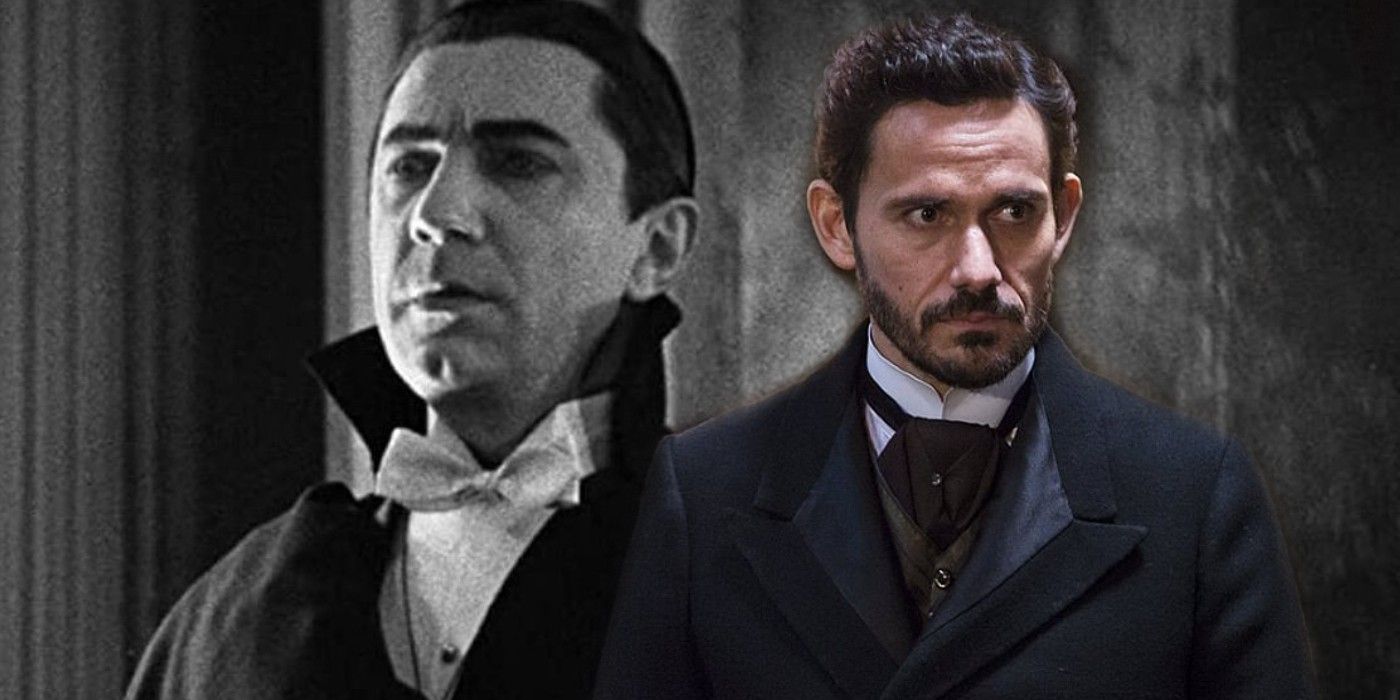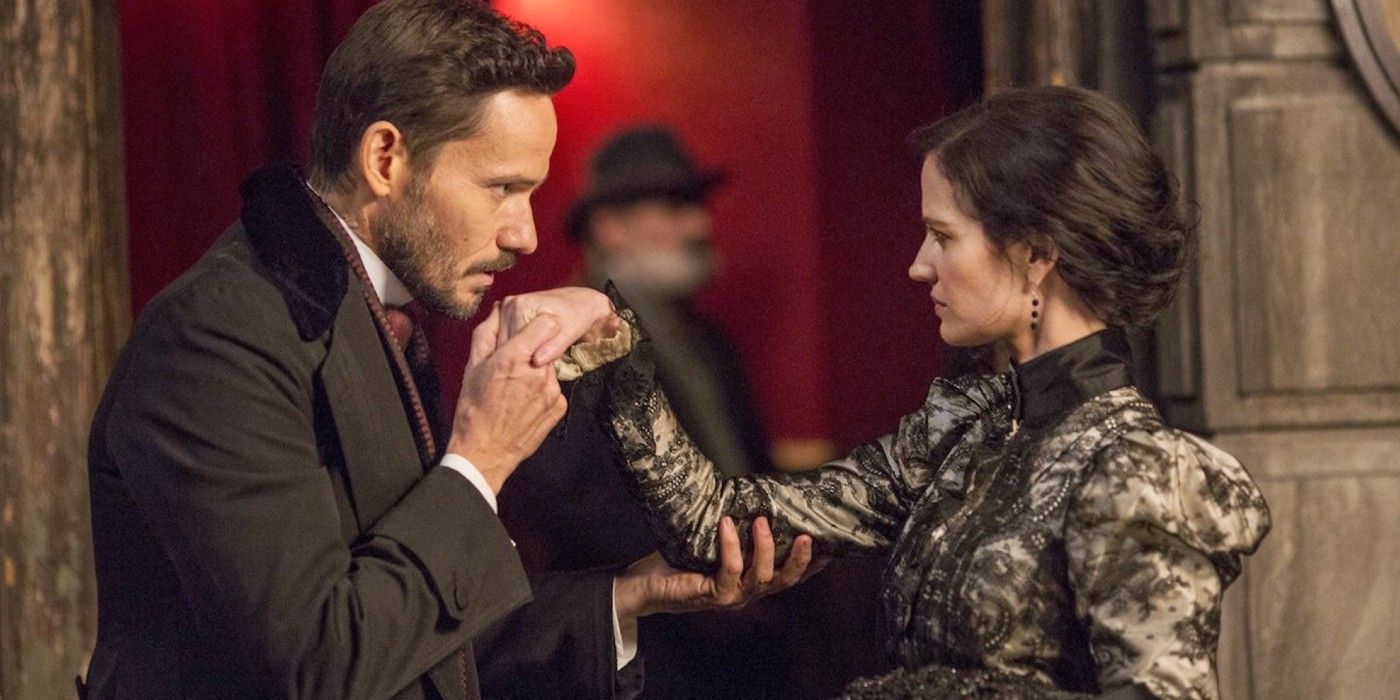John Logan’s Penny Dreadful includes various horror icons including the most recognizable vampire in film history, Dracula. Despite the fact that he does not appear in until season 3, episode 1, “The Day Tennyson Died,” he made a lasting impact on the series for his influence on the main cast and the overarching plot. Penny Dreadful was not the first, nor the last, to adapt the Dracula character from the original 1897 Bram Stoker novel. While the essence of the original vampire remains intact, Logan’s Dracula was drastically different in a significant way; here’s how.
Penny Dreadful is known for including significant literary characters such as Oscar Wilde’s Dorian Gray and Mary Shelley’s Dr. Victor Frankenstein. The appearance of Dracula was not unusual in the slightest but it was shocking that it took the series so long to include one of the most recognizable creatures in horror history. Portrayed by Christian Camargo, he first appears in “The Day Tennyson Died” as a possible love interest for Vanessa Ives (Eva Green). Due to her connections with the dark side of witchcraft and demonic energy, Dracula makes for the ultimate villain who will influence her into abandoning the light inside of her.
The first time Dracula appeared on screen was in 1920 in the Soviet film Drakula, but it is more commonly acknowledged that the silent film Nosferatu (1922) holds the title. Since then, Stoker’s story has been adapted into various films, formats, and stories over two-hundred times. With each addition, the original Dracula has lost some of its major elements and gained contemporary ones. Penny Dreadful’s depiction is no exception.
How Penny Dreadful’s Dracula Compares To Bram Stoker’s
Dracula was a nobleman who resided in the iconic location of Transylvania, but moved to England in order to feed on new blood. Throughout Stoker's novel, his only goal is to drink blood, survive, and transform others into vampires. His ability to attract people towards him resides in his wealth and status. In cinema history, he has been depicted as charismatic and manipulative towards both men and women with a larger goal of creating a vampiric army. He exhibits sexual undertones in order to mask his abilities and entrance others; this ultimately assists in reaching his goal. In Penny Dreadful, Dracula is similar to these depictions over the original novel.
The biggest aspect that the original story shares with Logan’s depiction is a different character entirely. Vanessa shares similarities with the novel's Mina Harker, who is forcefully transformed by Dracula, but does not lose her humanity entirely. Mina is also a character in Penny Dreadful, but Vanessa is a stand-in for much of her story in Stoker's novel. Both the novel's Mina and Vanessa retain their sense of morality and care towards those they knew prior to their transformation, which assists in Dracula's downfall. While this is a major feature both the book and show share, Dracula is, overall, very different. For instance, he gains an all new origin story as the brother of Lucifer and shares the same desire as him—wanting to win the love of Vanessa. It strengthens his identity as a nefarious creature by making him somewhat demonic rather than just a vampire. Dracula's new ties to the underworld and the realm of the living alike make him stronger than other depictions.
It is apparent that the series derived their primary framework of Dracula from popular films, and relied on Vanessa Ives as well as Mina Murray to bring in the original Bram Stoker story. The women in Penny Dreadful create the similarities between the two, but the titular vampire makes them inherently different. Dracula is constantly transforming throughout his many adaptations, which makes the character that Bram Stoker created over 100 years ago often unrecognizable to some degree. Ultimately, Penny Dreadful takes the important aspects of Dracula's story and creates their own unique character, only using the novel as a foundation.


